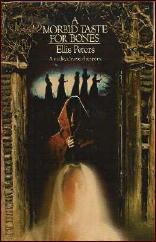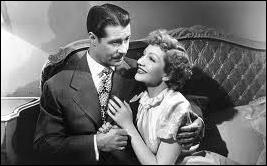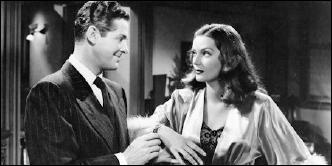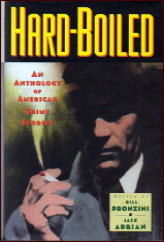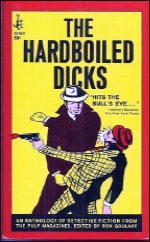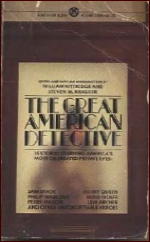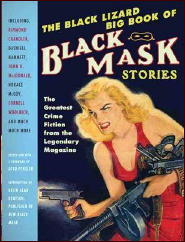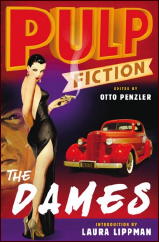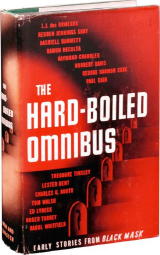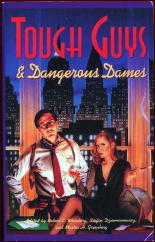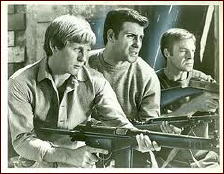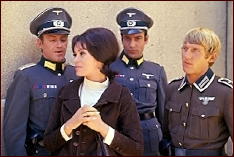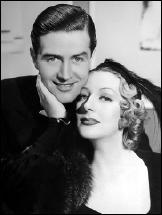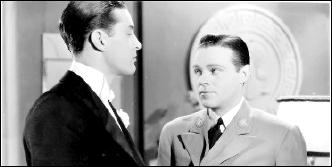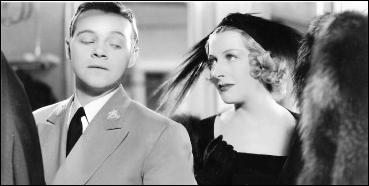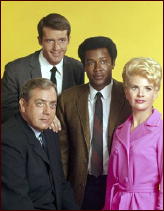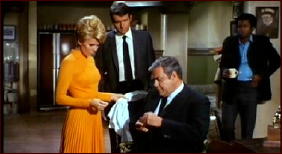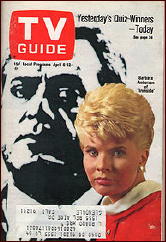Sat 6 Jul 2013
FILMS OF THE 30s, 40s AND 50s: SOME PERSONAL FAVORITES, by Barry Lane.
Posted by Steve under Bibliographies, Lists & Checklists[5] Comments
SOME PERSONAL FAVORITES
by Barry Lane
All of these films celebrate life and are not designed to focus on politics or sociology, merely perception … a kind of romantic perception:
1930’s:
It Happened One Night (1934) — Made a justifiable clean sweep of the Academy Awards and Clark munching carrots inspired the creation of Bugs Bunny.
Show Boat (1936) – The first book musical with a book that mattered. Kern and Hammerstein music and best of all, the stunning performance and beauty of Irene Dunne.
Roberta (1935) — More Jerome Kern, this time with Otto Harbach. Irene Dunne already the foremost interpreter of Kern’s work back in the lead but this time with Fred and Ginger bringing life and beauty. Anything with Astaire and Rogers, even The Barkleys of Broadway. Nah, not quite.
Man In The Iron Mask (1939) — Directed by James Whale with what is certainly the weirdest and most compelling dual performance yet by Louis Hayward. Best of all, part of producer Edward Small’s classic literary adaptations that include The Count of Monte Cristo with Robert Donat, directed by Rowland V. Lee and The Last of The Mohicans with Randolph Scott the definitive Hawkeye serving Philip Dunne’s screenplay. Dunne’s script the basis for the 1992 remake rather than Cooper’s novel.
Test Pilot (1938) — Gable and Tracy, directed by Victor Fleming with Myrna Loy for good measure. Clark and Spencer also together in San Francisco and Boom Town. Like old friends, always a pleasure to see.
Gone With The Wind (1939) — The most successful, dollar for dollar, film of all time. Deserves all the accolades it once received but a Producer’s picture and so sometimes give short shrift by the auteur crowd. Who cares.
Runners up: Ruggles of Red Gap, Idiots Delight and Jezebel, especially for George Brent’s uncharacteristic performance as Buck Cantrell.
1940’s
How Green Was My Valley (1941) — A John Ford-Philip Dunne masterpiece and the justifiable winner for Best Picture. AA.
Suspicion (1941) and Notorious (1946) — Hitchcock and Cary Grant in which the director allows the star to reveal his bitter, dark side. Suspicion does have problems but only in the final few moments. Let’s forgive and forget because the rest is so fascinating. Notorious however is perfection.
Casablanca (1942) — The film, along with The Big Sleep and To Have And Have Not, that best exemplifies the Bogart persona everyone loves. At the time of production the war’s outcome was not a forgone conclusion. Rhett Butler and Rick Blaine have more in common than the same initials. Both are cynical idealists in love with a woman they cannot have. And while they appear to say destructive things, they always come through. In short, Rick and Rhett are the same person. No accident in my opinion.
The Human Comedy (1943) and Here Comes Mr. Jordan (1941) — Life everlasting. You simply have to believe. Mr. Jordan is always with me. Claude Rains, Mickey Rooney and James Craig, out of nowhere, hold these films together with their intelligence and sensitivity.
And Then There Were None (1945) — The most brilliant adaptation of an Agatha Christie. A grand cast of Europeans lead by Louis Hayward, Roland Young and Barry Fitzgerald, supported by Rene Clair’s visual ideas and playing Dudley Nichols’ witty and original take, certainly bettering the original, both novel and play, and giving a much needed American take.
Red River (1948) — Classic western and the picture that made John Wayne into a mega star. Deservedly. Did something similar for Montgomery Clift. Dimitri Tiomkin’s score memorable. This is Wayne’s greatest performance and the one he should have received his Academy Award for. Not even a nomination. So much, by this time, for honors.
You Were Meant For Me (1948) — I saw this film as a spiritual, almost religious event. Dan Dailey plays, with considerable skill and charm, a somewhat successful band leader derailed by the 1929 economic collapse. Jeanne Crain is his much younger and loving wife. Oscar Levant hangs around delivering brilliant piano work and acerbic charm. Underlining the light presentation is a set of core beliefs encompassing, hope, hard work, and good old American know how. I love the film and related to it personally and professionally.
Honorable Mention: Command Decision, an all star cast headed by Clark Gable with a story told from the point of view of the general’s who send young men to die and try to justify their deaths with meaning. They succeed.
1950’s
The Quiet Man (1952) — John Ford’s love song to Ireland, home of his ancestors. A comedy that touches on mostly serious stuff including but not limited to the IRA, Catholic, Protestant relations and the heat generated by Maureen O’Hara and John Wayne. Ford’s final Academy Award and the only major award won by a Republic production. A beautiful new Blu Ray disc is available. Well worth the price.
Singin’ In The Rain (1952) — Without the considerable charm of the music this is probably the defining take by Hollywood on the silent era. Gene Kelly, Debbie Reynolds, Donald O’Connor and a star making moment or two by Cyd Charisse.
To Catch A Thief (1955) and North By Northwest (1959) — Hitchcock presents Grant again but this time as the debonair rake we all identify with. Grant plays essentially the same part on both pictures — a man sought by the police for something in which he has no involvement. Often, To Catch A Thief is misunderstood as being about the police after John Robie. Not so. It is about Grace Kelly after Cary Grant.
The Tall Men (1955) — An ordinary western unless you see at as Raoul Walsh’s deification of Clark Gable, at which point it goes right to the gut.
The Searchers (1956) — Often referred to as racist when in fact it is libertarian and not at all bigoted. Nor is its protagonist, Ethan Edwards. He simply sees the serpent and is smart enough to slay it. On Blu Ray and worth the price. John Wayne’s second Academy Award — yet to be received.
Note: Vertigo (1958) — I have now seen this film four times and it has grown on me. It is so strong in my memory that I only wish Lew Landers could have had the assignment. With Chester Morris and Wendy Barrie in the leads (she actually could have had a great career but for some errors in her private life) and coming in at 72 minutes. They might have had another Julia Ross (My Name Is Julia Ross). As it stand it is clearly an internalized bit of neuroses that plays like the jumping off point for Last Year At Marienbad.
Final Thoughts — And They May Be Just That
Orson Welles is absent. Not my intention to slight the great man. My personal favorites are The Magnificent Ambersons and The Lady From Shanghai but I could not work them in.
Later films include Ride The High Country, Chinatown and The Brothers McMullen.
